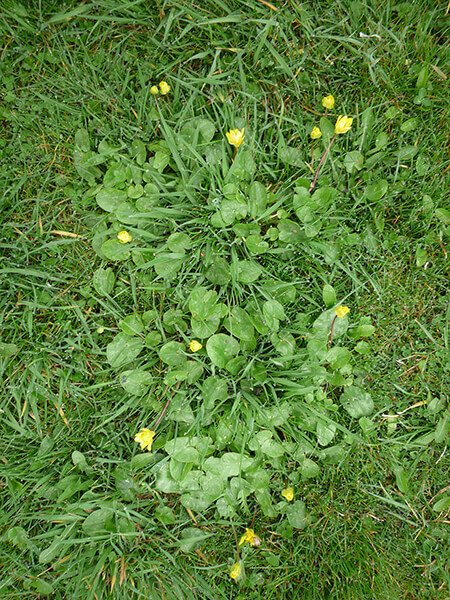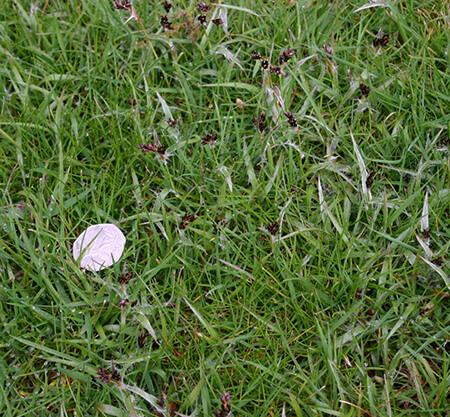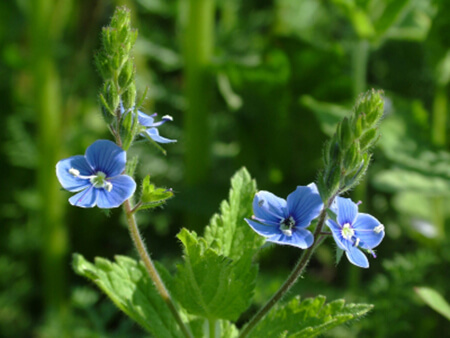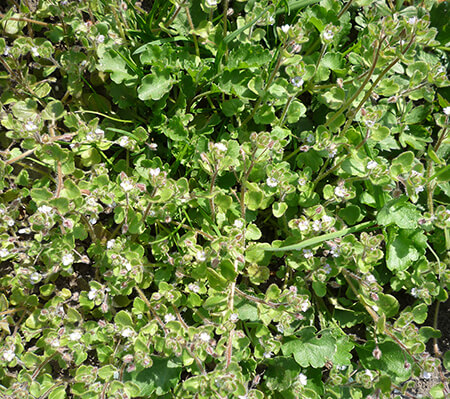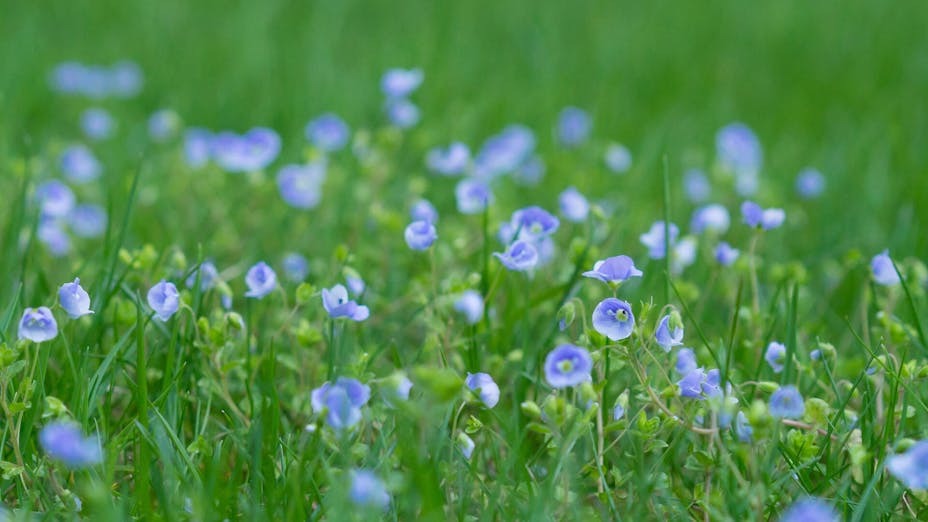
Hard to Kill Lawn Weeds
Speedwell, celandine, woodrush and violets can get out of control in the lawn so various weed control methods are needed to kill, control or remove them
The worst of the hard to kill weeds are:
Celandine
Also known as Lesser Celandine or Figwort. This is one of the first weeds to appear. A low growing plant with waxy spade shaped leaves growing from a tuber which produces bright buttercup shaped flowers. A pretty plant though it can eventually colonise large areas of lawn if left unchecked. Flowers in March and April and will then disappear in May to re-emerge next spring:
- Short life span above ground means treating in early spring only
- Waxy leaf makes penetration of weed killer chemicals difficult
- Likes damp shady areas so improve drainage and light penetration if possible
- Digging the small tubers out is the best approach
Violet – often an escapee from the garden
If this one manages to get into your lawn you’ll regret planting it in the first place:
- Spreads easily from the borders so start by removing them first
- Digging them out is the best approach
- Requires frequent spot treat with the ready to use weed killers
Woodrush – hairy coarse leaves
If the conditions are right this weed can be present in the lawn all year round though it is most obvious during its flowering period in the early spring. Often mistaken for coarse grass this stubby grass like weed has very hairy coarse leaves with a dark ‘bobble’ like seed head. Forms large patches in the lawn by sending out stolons to create new plants.
This plant favours wet acidic conditions but it appears now to establish in any lawn to some degree regardless of acidity.
- Likes sandy or acidic soils – though any lawn can be infested
- Adding ground limestone may help but may also invite other weeds and coarser grasses
- Hairy leaves prevents contact between leaf and weed killer so is hard to kill
- The plant is also resistant to most weed killers
- Digging them out is the best approach
- Though not guaranteed it is possible to treat with weed killer in late summer or autumn when the hairs on the leaves are less prevalent. A repeat application will more than likely be needed 6 weeks after the first
Speedwell
Though there are perhaps two dozen or more varieties of speedwell you are only likely to be bothered by Germander and Slender Speedwell with the latter being a garden escapee; lovely!
Germander Speedwell
Bright blue flower with a white eye, also known as Bird’s-eye Speedwell. Leaves have jagged or toothed edges. Becomes low growing and dense when in the lawn compared to a lanky growth habit in the borders.
Slender Speedwell
Tiny pink or mauve flower, also known as Round-leaved Speedwell. Has a similar growth habit to Germander Speedwell.
Both these plants spread from cuttings so most occurrences are due to mulch mowing, raking, scarifying or mowing in general where some plant material is left behind. Therefore, removing all mowings and any plants from the borders is a very good idea.
- Present all year round in the lawn
- Very resistant to weed killers though you may have some success with Resolva Ready to Use
- Can be checked with ferrous sulphate in spring but is unlikely to die
- Can be controlled by frequent raking or scarifying though you must collect ALL the debris
- Digging the plant out is the only sure way of removing it
A customer took our recommendations to the extreme with some positive results. Here is what he told us:
I have struggled to eradicate patches of Germander Speedwell for 8 years. Noting your comments on this Website, in mid March I mowed the lawn short, applied 2x strength ferrous sulphate. The speedwell went yellow and began to loose leaves. After 10 days I applied 2x strength Resolva lawn weedkiller. Speedwell began to disappear. 10 days after I gave the lawn my normal short mow, raking , scarifying, over seeding and fertilising treatment. So far the lawn is free of any sign of germander speedwell. Treatment may be risky but in bad cases it is clearly worth a try. Sandy, acid soil, Dorset. Thought you may find this of interest. Clive, a regular customer for your products.
Comment: Should you decide to try this approach please realise you can seriously damage the grass but if you are in a make or break situation it is well worth a try. I'd also suggest based on Clive's experience that you treat with Resolva first as the loss of leaves due to the Ferrous Sulphate will reduce the effect of the Resolva.
There is one final approach that can be taken with all the above weeds if the problem cannot be managed; that is to renovate the area by killing the whole lot off with a glyphosate type product, raking out the dead grass and weeds (or stripping the surface off and rotovating) and then sowing grass seed on the clean surface.
